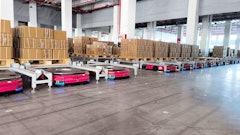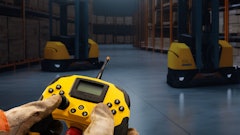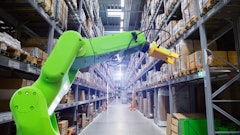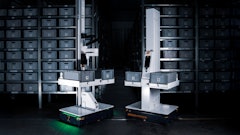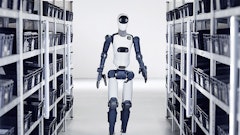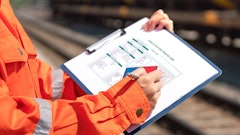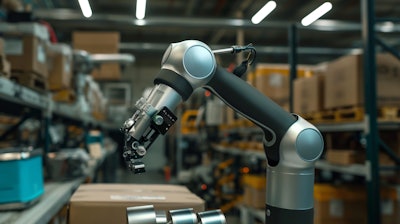
In today’s fast-paced business environment, the pressure to streamline operations is greater than ever, and the rise of AI and workflow automation has emerged as a key solution to meet the evolving demands of manufacturing and warehousing. As conversations about AI and automation intensify across industries, the concept of a fully automated warehouse has become a popular topic of discussion. With promises of improved turnover rates, faster production, and virtually no errors, complete automation no longer seems just a dream, but rather a realistic solution. Recent statistics support this trend, with 67% of companies having adopted some form of automation in some capacity. Nevertheless, the truth is that most warehouses aren’t ready, and may never be, 100% autonomous.
Why full automation falls short
While it seems automation continues to expand its functionality, the knowledge surrounding its implementation is just catching up. Many have the notion that adding automation is plug-and-play, similar to the addition of a conveyor belt or new scanner, but automated systems still lack standardization, with most warehouses needing to develop a custom design, which can take 8-12 months.
Additionally, the upfront costs of automating warehousing are steep due to the custom nature of machinery. With low-level automation starting at around $10,000-50,000, the fully automated warehouse many dream of, in reality, costs millions of dollars. Furthermore, automation lacks backward compatibility, with a recent survey revealing that nearly half (48%) of respondents reported integration with existing systems as a significant challenge. Many warehouses operate with a patchwork of older equipment and software, and aligning new automation technologies with legacy systems can require complex custom solutions and significant IT involvement, often with an initial cost that many businesses simply cannot afford.
Following installation, it typically takes 2-3 years for an automated system to truly prove its value. The first couple of years will be spent calibrating systems to ensure that every discrepancy is accounted for, including the shape of the product, specialty decision-making when sorting, and the correct placement of items. This period may also be marked by issues surrounding faulty equipment, with many assuming that machinery works flawlessly out of the box. With performance and reputation still at stake during this phase, it’s critical to resolve every issue to avoid any potential business setbacks.
While early adopters of automation believed that a “lights-out” warehouse, where every process is automated, was soon to be within grasp, it quickly became apparent that the human element of automation cannot be easily replaced. It’s reported that the vast majority of warehouse automation solutions still require human labor. Many are finding that striking a balance between the need for automation and maintaining and managing a skilled workforce is the most beneficial approach.
The reality of complete automation
While some companies make the leap toward completely automated warehouses, utilizing AI and robotics to automate nearly every step of the fulfillment process, the facilities still rely on employees. Even with millions spent on automation, the majority of complex procedures will still depend on humans, while robotics can facilitate simple movements, such as carrying and moving heavy loads.
As warehouses face growing pressure to boost efficiency and streamline operations, many have invested significant time and resources into adopting new technologies. Yet amid all the innovation, one truth remains: humans are simply irreplaceable.
The rise of “human-centered automation”
While full automation remains out of reach for most, the pursuit of it still offers valuable lessons. When companies invest in their teams with the same intention as they do in technology, workers thrive. Yet fears around job security continue to grow, and if left unaddressed, can lead to disengagement, high turnover, and reputational harm across the industry. Rather than focusing on replacement, the more effective strategy is enhancement. “Human-centered” automation is becoming a business imperative for those looking to future-proof their operations.
When shown interest, whether through the implementation of new technologies or expedited processes, employees find a renewed sense of engagement and excitement. Working in the warehouse can be long and laborious, but prioritizing worker satisfaction improves every facet of everyday processes. Additionally, many of these technologies require minimal training time and are significantly less costly.
One such innovation is mobile-powered carts, or workstations on wheels, that work in tandem with workers across sectors. Mobile-powered workstations with customizable features—ranging from scanners for fulfillment to screens for administrative tasks—can be tailored to fit specific roles and workflows. By reducing the time spent on repetitive tasks, such as walking back and forth across a warehouse floor, these solutions help improve working conditions while boosting employee productivity and morale.
Also, simple robots execute repeatable tasks, which can be a cost-effective solution due to their standardization and ease of implementation.
Investing in resilience
As industries pursue innovation, the most resilient warehousing strategies are those that invest in both people and technology, rather than one at the expense of the other. Full automation may promise speed and efficiency, but without the adaptability, judgment, and creativity of human workers, even the most advanced systems fall short of their potential. By prioritizing tools that enhance human capability, rather than attempting to replace it, manufacturers and logistics leaders can build workforces that are not only more productive but also more satisfied, stable, and future-ready. In the end, it’s not about eliminating labor; it’s about elevating it. The future of warehousing isn’t lights-out—it’s lights-on, with empowered workers at the center.




![Pros To Know 2026 [color]](https://img.sdcexec.com/mindful/acbm/workspaces/default/uploads/2025/08/prostoknow-2026-color.mduFvhpgMk.png?auto=format%2Ccompress&bg=fff&fill-color=fff&fit=fill&h=100&q=70&w=100)



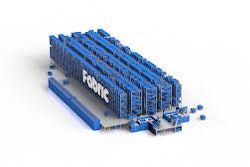
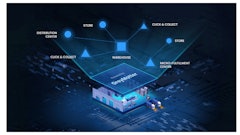
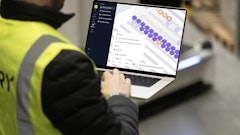
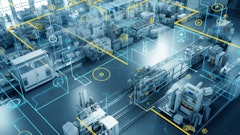
![Pros To Know 2026 [color]](https://img.sdcexec.com/mindful/acbm/workspaces/default/uploads/2025/08/prostoknow-2026-color.mduFvhpgMk.png?ar=16%3A9&auto=format%2Ccompress&bg=fff&fill-color=fff&fit=fill&h=135&q=70&w=240)
